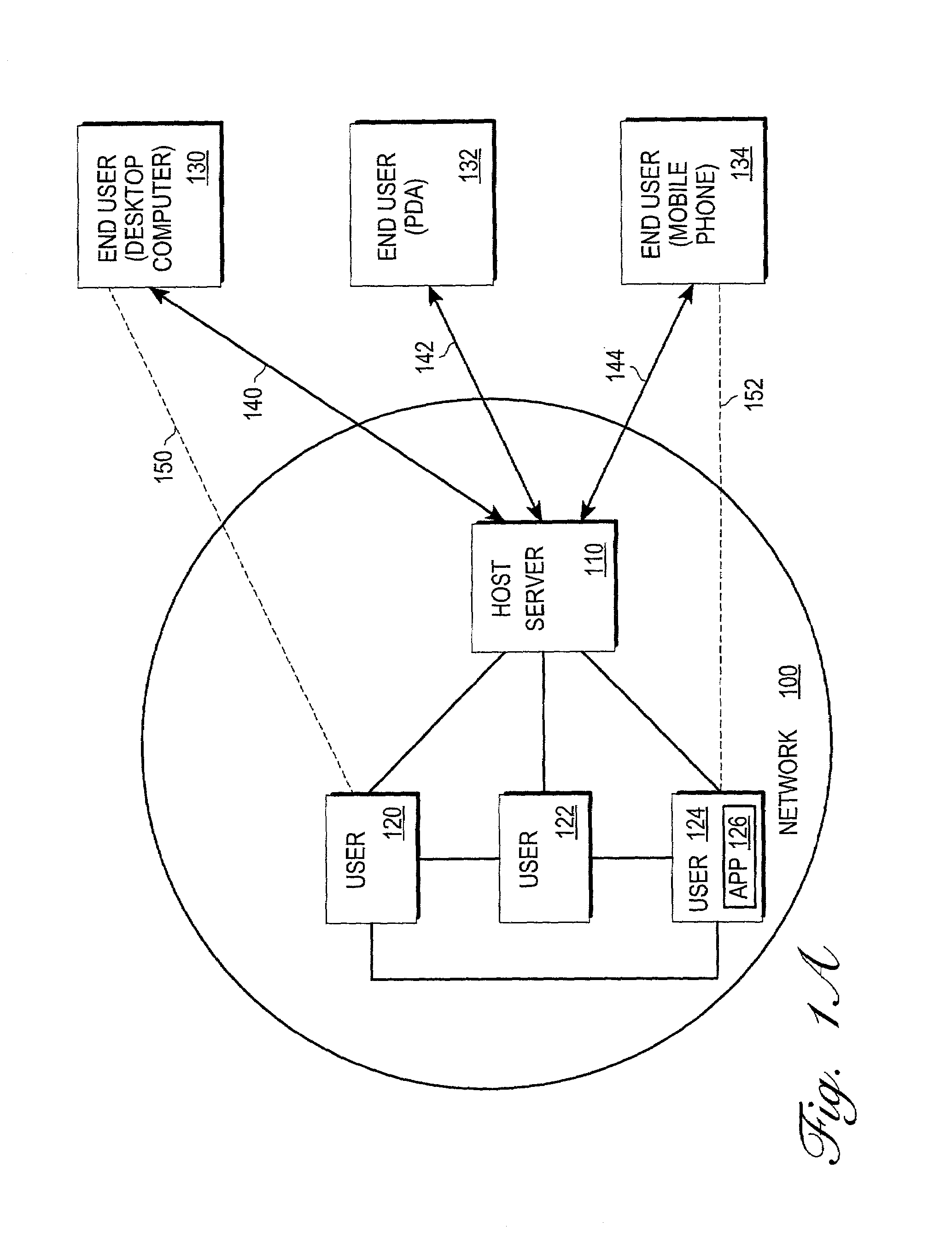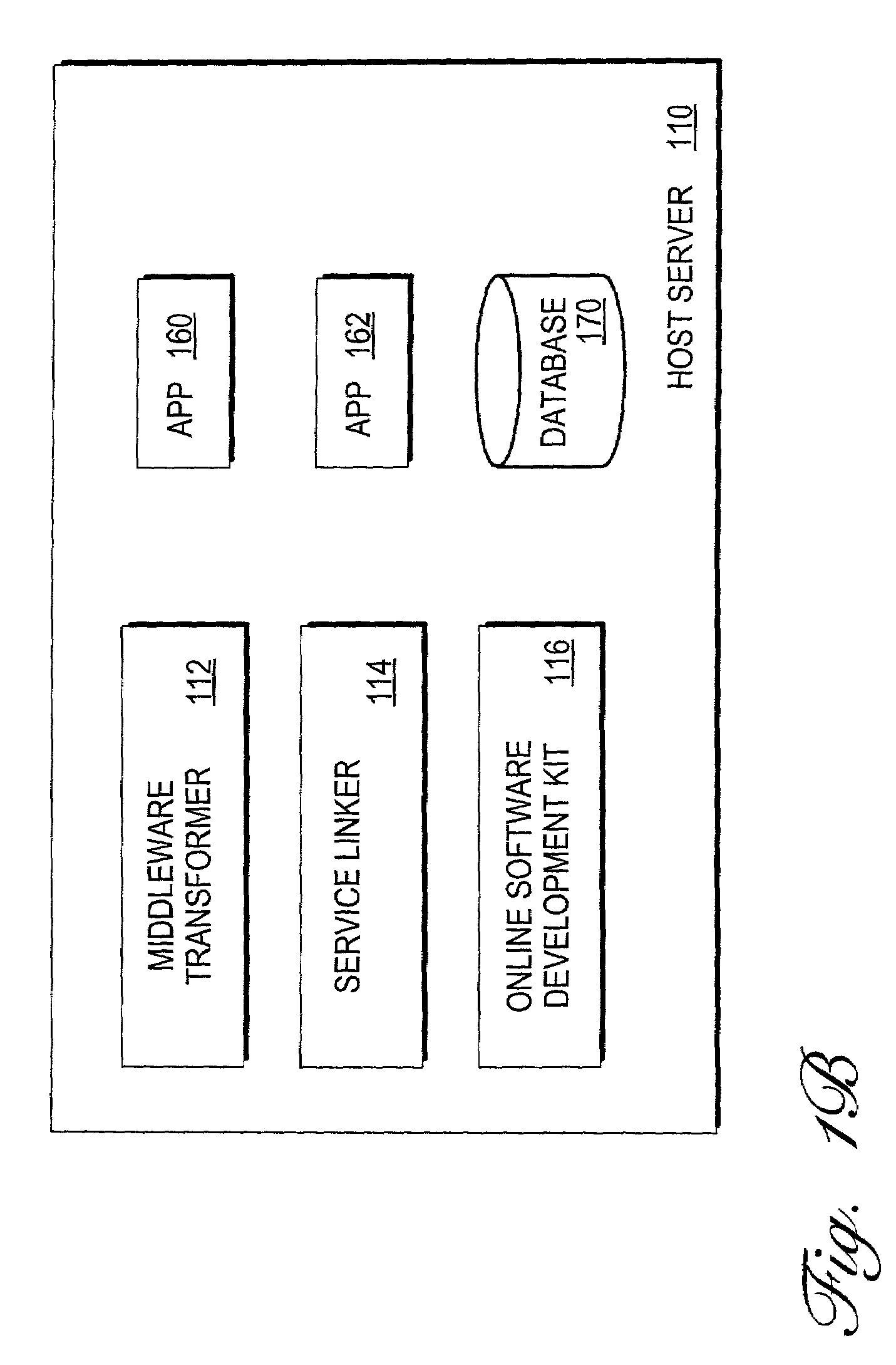Developing applications online
a technology of application and web application, applied in the field of providing services to clients, can solve the problems of application design, inability to use a conventional computer system, and limited functionality of the “micro browser” contained in these devices,
- Summary
- Abstract
- Description
- Claims
- Application Information
AI Technical Summary
Benefits of technology
Problems solved by technology
Method used
Image
Examples
Embodiment Construction
[0030]A network based operating system for mobile devices is described. In the following description, for the purposes of explanation, numerous specific details are set forth in order to provide a thorough understanding of the present invention. It will be apparent, however, to one skilled in the art that the present invention may be practiced without these specific details. In other instances, well-known structures and devices are shown in block diagram form in order to avoid unnecessarily obscuring the present invention.
[0031]In the following description, the various functions shall be discussed under topic headings that appear in the following order:
[0032]I. STRUCTURAL AND FUNCTIONAL OVERVIEW[0033]A. Hosting Applications[0034]B. Customizing Content Provided by a Service[0035]C. Providing Content from Multiple Services[0036]D. Accessing Data Stored at an Intermediary from a Service[0037]E. Developing Applications Online
[0038]II. DEVELOPING APPLICATIONS ONLINE[0039]A. Creating Appl...
PUM
 Login to View More
Login to View More Abstract
Description
Claims
Application Information
 Login to View More
Login to View More - R&D
- Intellectual Property
- Life Sciences
- Materials
- Tech Scout
- Unparalleled Data Quality
- Higher Quality Content
- 60% Fewer Hallucinations
Browse by: Latest US Patents, China's latest patents, Technical Efficacy Thesaurus, Application Domain, Technology Topic, Popular Technical Reports.
© 2025 PatSnap. All rights reserved.Legal|Privacy policy|Modern Slavery Act Transparency Statement|Sitemap|About US| Contact US: help@patsnap.com



